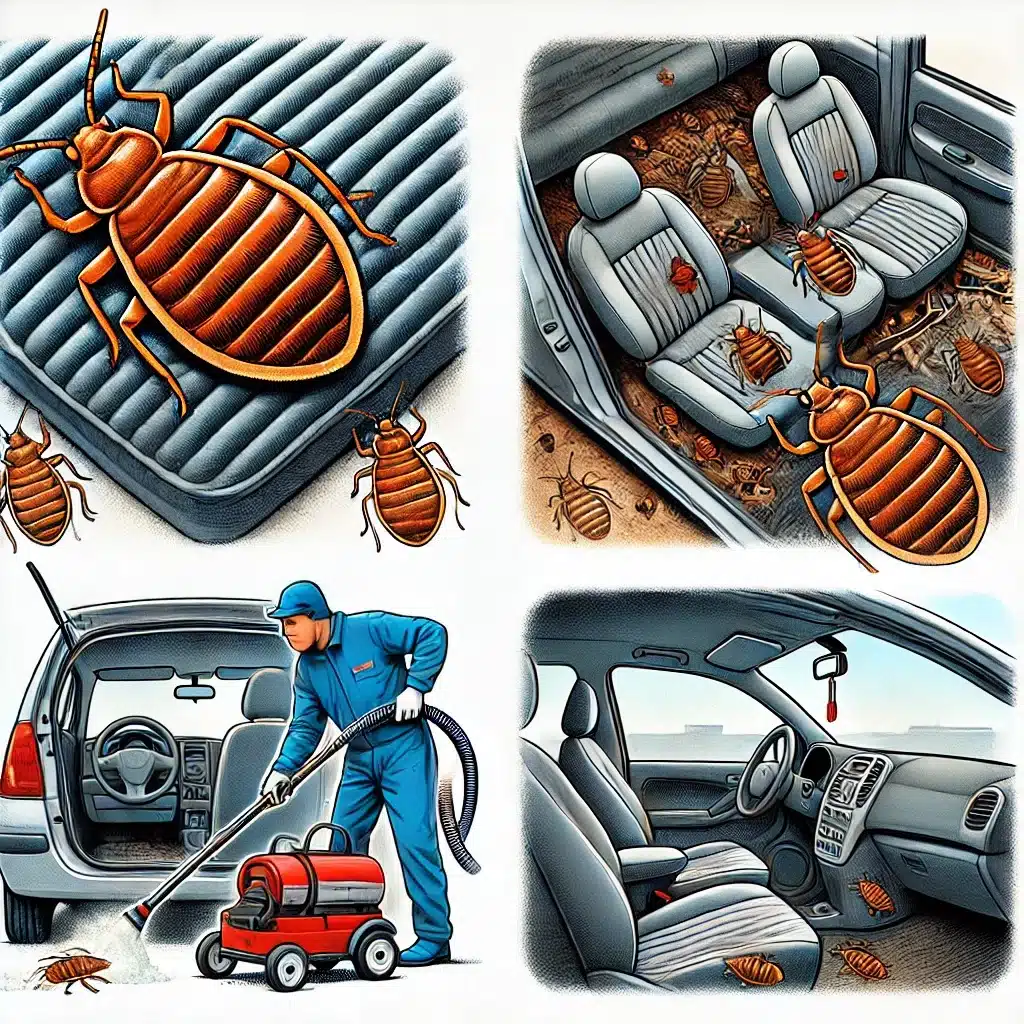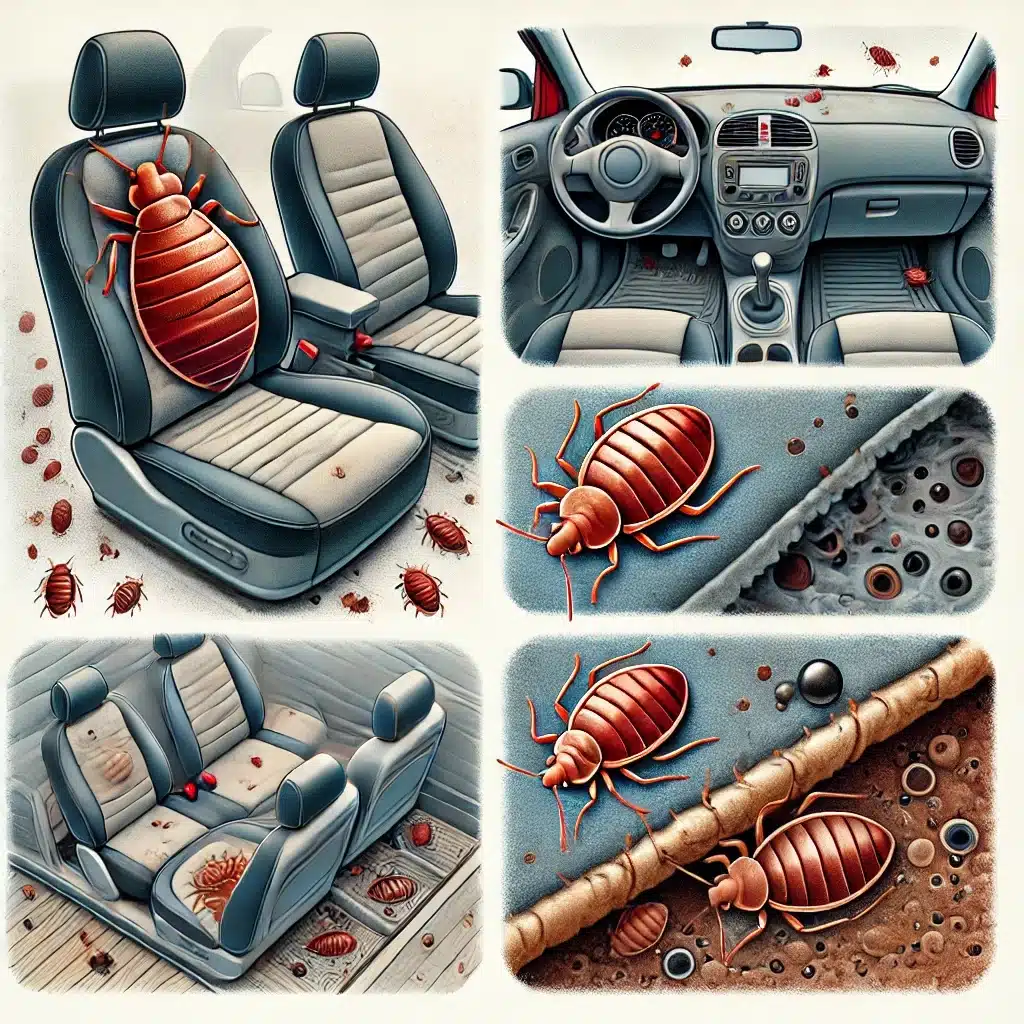By ThermoPest – Your Local Pest Control Experts
Bed bugs are the last thing anyone wants to deal with. These tiny pests are notorious for invading homes, but what about your car? You might be wondering, “Can bed bugs really infest my vehicle?” The short answer is yes—but before you panic, it’s not as common as you might think. Still, it’s a possibility, especially if you’ve recently dealt with an infestation at home or have been travelling.
Let’s break down how bed bugs can get into your car, how to spot the signs, and what you can do to prevent or eliminate them if they hitch a ride.

Can Bed Bugs Live in Cars?
Yes, bed bugs can survive in cars, but it’s not exactly their dream home. Bed bugs prefer to be where the food is, and for them, that means humans. They’re most comfortable in places where people sleep, like beds (obviously), sofas, and occasionally even clothing or luggage. However, under the right circumstances, they can end up in your car.
How? Well, it’s usually a matter of hitching a ride. If you’ve been somewhere that has bed bugs—whether it’s a hotel, a friend’s house, or even public transport—they can cling to your clothing, bags, or even furniture you’re moving. Once they’re in your car, they’ll start looking for places to hide until they can reach a human host again. That’s when the trouble starts.
Signs of a Bed Bug Infestation in Your Car
How do you know if your car has bed bugs? It’s not like you’ll see them lounging on your dashboard! Bed bugs are expert hiders, so you’ll need to look for signs that they’ve set up camp. Keep an eye out for small reddish-brown bugs in crevices like seat seams, under mats, or around seatbelts. You might also spot dark stains (which are their droppings) or even tiny eggs tucked into cracks.
Checking your car carefully is essential if you suspect bed bugs have moved in. Start by looking at the seams of your car seats and around the edges of your carpets. These are common hiding places, as bed bugs love tight spaces where they can remain undisturbed until it’s feeding time.
How Bed Bugs Survive in a Car
One of the reasons bed bug infestations in cars are rare is that cars aren’t the most suitable environment for them. Bed bugs need a regular food source (that’s you!) to survive. In a home, where they can feed on you every night, they thrive. But in a car, their access to humans is much more limited, which means they won’t flourish as easily.
That said, bed bugs can survive for a surprising amount of time without feeding. They can hang on for weeks or even months in your car, waiting for their next meal. Temperature is another factor. Bed bugs prefer moderate conditions, so while extreme heat or cold can kill them, the relatively mild temperatures inside a car (especially if it’s parked in a garage or only used occasionally) could allow them to survive.
How to Prevent Bed Bugs from Getting in Your Car
Prevention is always better than cure, and there are a few simple steps you can take to stop bed bugs from hitching a ride in your car. First, be cautious when you’re travelling or moving items like furniture. If you’re staying in hotels or renting holiday homes, inspect your luggage and clothing before putting it in your car. Look for any signs of bed bugs, especially if you’ve stayed somewhere that’s had a known problem.
Second, keep your car clean. Regularly vacuuming and cleaning your car can help you catch any potential infestations early. While vacuuming alone won’t eliminate bed bugs, it can reduce the chances of them sticking around unnoticed. And yes, you can even buy bed bug seat covers for added protection!
How to Get Rid of Bed Bugs in Your Car
So, what do you do if you find bed bugs in your car? The good news is that while it’s a headache, it’s not impossible to deal with. Start by giving your car a thorough clean. Vacuum the seats, carpets, and any other areas where bed bugs could be hiding. Pay special attention to the seams and corners where they like to burrow.
Steam cleaning is another great option, as high temperatures will kill bed bugs and their eggs. If your car’s upholstery can handle it, using a steam cleaner on the seats and carpets can help eliminate the pests.
But if the infestation is widespread or you’re unsure whether you’ve got rid of all the bugs, it’s time to call in the professionals. Pest control services can offer targeted treatments for your car, such as chemical-free heat treatments, to ensure that every last bed bug is gone. At ThermoPest, we’ve got experience with this and can get your car back to being pest-free.
Myths About Bed Bugs in Cars
There are a few myths out there about bed bugs that might be worth clearing up. For example, some people think that bed bugs only infest beds—hence the name—but that’s not true. Bed bugs can live anywhere there’s access to humans, whether it’s a sofa, an aeroplane seat, or your car. The key is proximity to people.
Another myth is that parking your car in the sun will kill the bed bugs. While extreme heat can kill bed bugs, simply parking your car in the sun isn’t going to cut it. The temperature inside your car needs to reach above 49°C to effectively kill the pests, and even then, the heat needs to penetrate into all the little nooks and crannies where bed bugs might be hiding.

Final Thoughts: Can Bed Bugs Infest Cars?
So, can bed bugs infest cars? Yes, they can—but it’s not something that happens frequently. If you’re careful about what you put in your car and take preventive steps, you’re unlikely to face a major infestation. But if you suspect that bed bugs have made their way into your vehicle, it’s best to act fast before they spread any further.
At ThermoPest, we know how stressful dealing with bed bugs can be—whether they’re in your home or your car. If you’re unsure about how to handle a potential infestation, give us a call. We’ve got the tools, expertise, and experience to help you get rid of those unwelcome passengers once and for all.
